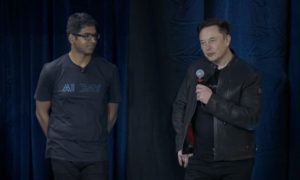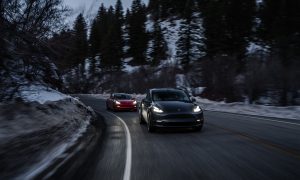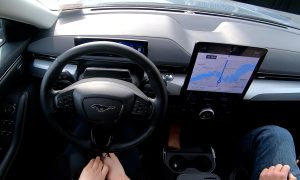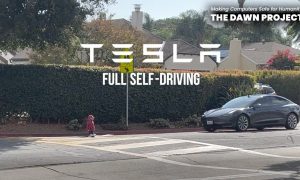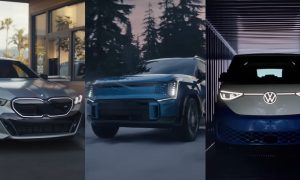News
Tesla Model S on Autopilot crashes into stalled van on highway
A Tesla Model S crashes into the back of a stalled vehicle on a highway. Who is responsible, Autopilot, TACC, or the driver? Ultimately, we know the answer but not everyone wants to admit it.
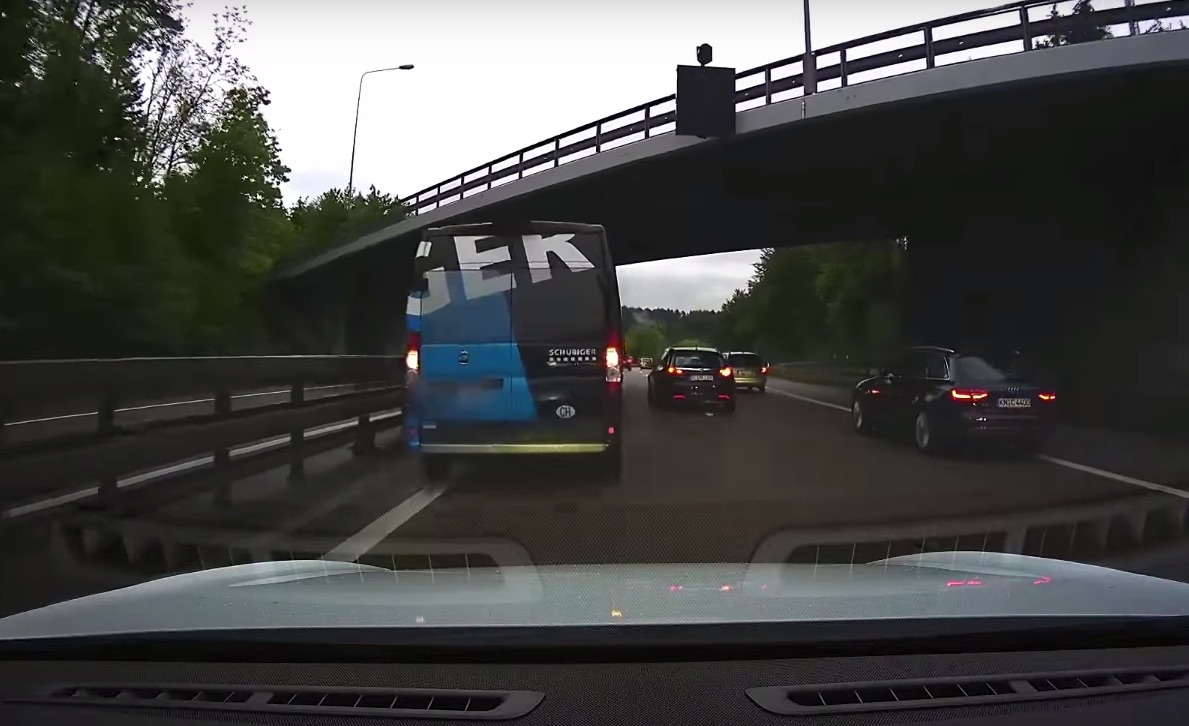
A Tesla Model S on Autopilot crashed into the back of a stalled van in the high speed lane of a highway this week. The owner Chris Thomann who caught the accident through his dash cam believes it shows the Traffic Aware Cruise Control/Autopilot feature of his car malfunctioned. According to the description on Thomann’s YouTube video, he claims Autopilot and TACC have worked flawlessly many times before, but this time “The forward collision warning turned on way too late, it was set to normal warning distance”.
Updated: The original YouTube video has been marked as private so we added this animated gif via CNET showing the events of what happened.
There have been several instances lately in which Tesla drivers claim their cars malfunctioned, leading to collisions. Is there something wrong with these systems that people should be aware of?
The answer appears to be “No.” On Reddit, Tesla owner Ricodic took the time to post this language from page 69 of the Model S owner’s manual:
Warning: Traffic-Aware Cruise Control can not detect all objects and may not brake/decelerate for stationary vehicles, especially in situations when you are driving over 50 mph (80 km/h) and a vehicle you are following moves out of your driving path and a stationary vehicle or object, bicycle, or pedestrian is in front of you instead. Always pay attention to the road ahead and stay prepared to take immediate corrective action. Depending on Traffic-Aware Cruise Control to avoid a collision can result in serious injury or death. In addition, Traffic-Aware Cruise Control may react to vehicles or objects that either do not exist or are not in the lane of travel, causing Model S to slow down unnecessarily or inappropriately.
The problem is not with the software, it is with human drivers. It’s not that we don’t trust the technology; it’s that we trust it too much. We assume it means we can read the paper on the way to work or fall asleep at the wheel. We get lulled into a sense of false security by how well Autopilot and TACC work most of the time. The failure is in the human brain, which needs a moment or two to recognize that an emergency is in the making and that it is time to re-assert control over the vehicle.
Tesla owner Jarrod Overson spoke about this candidly in a post on Medium after his car suffered a collision in April. “Once I recognized the car was stopped in front of me, I explicitly remember panicking with the following thoughts going through my head: “Does my car see this? Is it going to do anything? NO. NO IT ISN’T. EMERGENCY.” In retrospect, the actions I needed to take were obvious . I should have regained control immediately. That half of a second or more probably would have made a lot of difference. The problem is that my brain wasn’t primed to have that conversation with itself. Now it is.”
Overson knew some would take him to task for his error in judgment. “I’m not looking forward to the comments calling me stupid for not doing this automatically, but I felt like it’s an important topic to be open about. I’d wager we all had a time in our lives where we didn’t know the extent of some technology, trusted it too far, and had to recalibrate after we understood the limits. Now we might just have to be a little bit luckier to get to that recalibration stage.”
It’s what autonomous driving experts refer to as “the handoff,” that brief period of time between when everything is going along serenely and when it is not. It’s when the computer suddenly finds itself in one of what Elon Musk calls a “corner case.” Those are instances that requires human input. Often, drivers have less than a second to react.
As good as Autopilot is — and it is getting better all the time — Tesla drivers still must be aware that the company and the software expect them to step in when necessary. Many put too much faith in the technology and are willing to abdicate ultimate responsibility for the operation of the car to machines.
The glowing praises we often hear from Elon make it easy to do. Perhaps Musk and Tesla could back their statements about the wonders they have created down a notch. Not everyone reads every page of the owner’s manual and even fewer commit everything found in the instructions to memory.
Elon Musk
Elon Musk is now a remote DOGE worker: White House Chief of Staff
The Tesla and SpaceX CEO Elon Musk is no longer working from the West Wing.
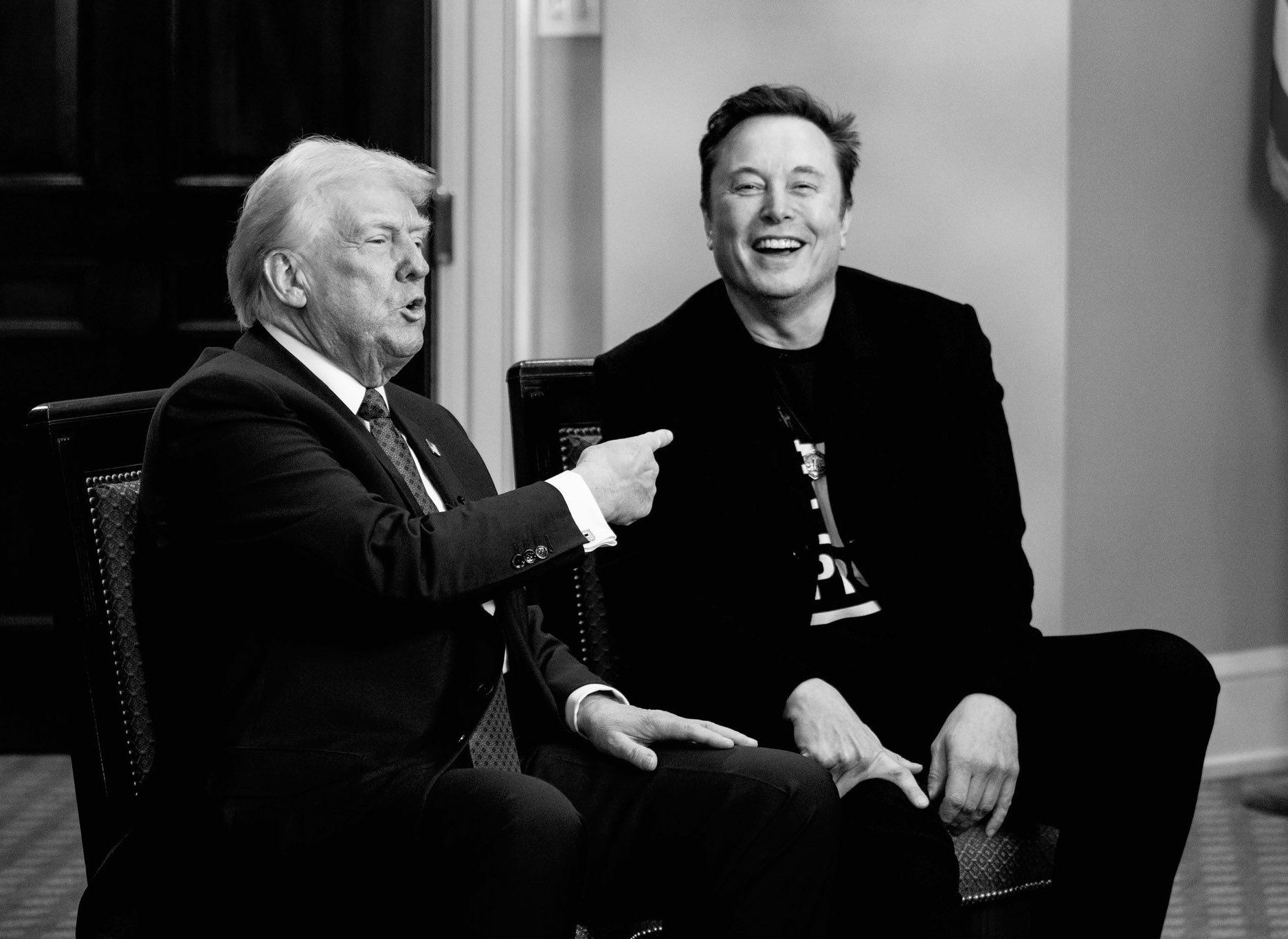
In a conversation with the New York Post, White House Chief of Staff Susie Wiles stated that Tesla and SpaceX CEO Elon Musk is no longer working from the West Wing.
As per the Chief of Staff, Musk is still working for DOGE—as a remote worker, at least.
Remote Musk
In her conversation with the publication, Wiles stated that she still talks with Musk. And while the CEO is now working remotely, his contributions still have the same net effect.
“Instead of meeting with him in person, I’m talking to him on the phone, but it’s the same net effect,” Wiles stated, adding that “it really doesn’t matter much” that the CEO “hasn’t been here physically.” She also noted that Musk’s team will not be leaving.
“He’s not out of it altogether. He’s just not physically present as much as he was. The people that are doing this work are here doing good things and paying attention to the details. He’ll be stepping back a little, but he’s certainly not abandoning it. And his people are definitely not,” Wiles stated.
Back to Tesla
Musk has been a frequent presence in the White House during the Trump administration’s first 100 days in office. But during the Q1 2025 Tesla earnings call, Musk stated that he would be spending substantially less time with DOGE and substantially more time with Tesla. Musk did emphasize, however, that DOGE’s work is extremely valuable and critical.
“I think I’ll continue to spend a day or two per week on government matters for as long as the President would like me to do so and as long as it is useful. But starting next month, I’ll be allocating probably more of my time to Tesla and now that the major work of establishing the Department of Government Efficiency is done,” Musk stated.
Elon Musk
Tariff reprieve might be ‘Tesla-friendly,’ but it’s also an encouragement to others
Tesla stands to benefit from the tariff reprieve, but it has some work cut out for it as well.
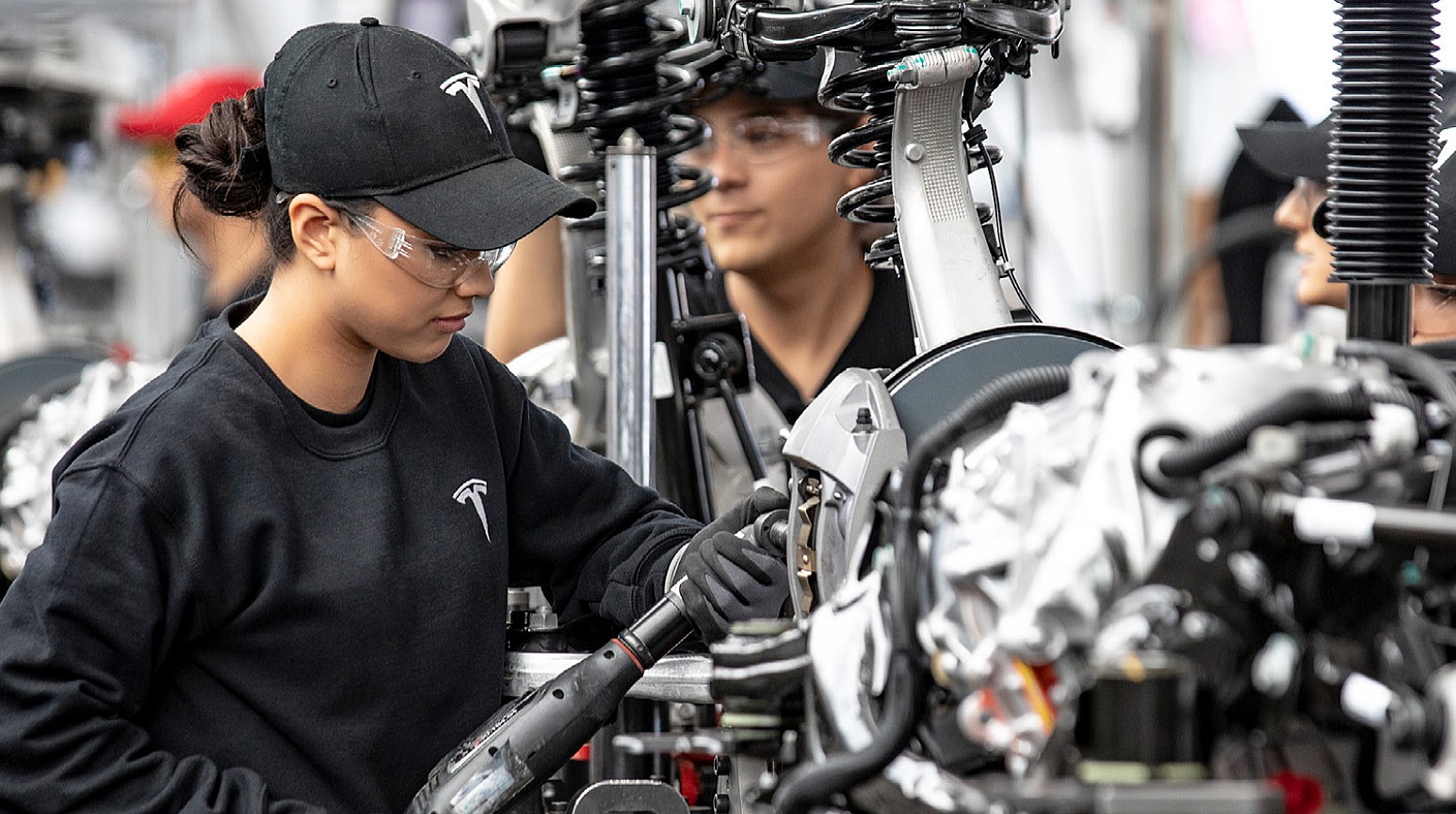
After Secretary of Commerce Howard Lutnick made adjustments to the automotive tariff program that was initially announced, many quickly pointed to the reprieve as “Tesla-friendly.”
While that may be the case right now, it was also a nudge of encouragement to other companies, Tesla included, to source parts from the U.S. in an effort to strengthen domestic manufacturing. Many companies are close, and it will only take a handful of improvements to save themselves from tariffs on their cars as well.
Yesterday, Sec. Lutnick confirmed that cars manufactured with at least 85 percent of domestic content will face zero tariffs. Additionally, U.S. automakers would receive credit up to 15 percent of the value of vehicles to offset the cost of imported parts.
Big Tesla win? Sec Lutnick says cars with 85% domestic content will face zero tariffs
“This is ‘finish your cars in America and you win’,” Lutnick said.
Many were quick to point out that only three vehicles currently qualify for this zero-tariff threshold: all three are Teslas.
However, according to Kelley Blue Book’s most recent study that revealed who makes the most American cars, there are a lot of vehicles that are extremely close to also qualifying for these tariff reductions.
Tesla has three vehicles that are within five percent, while Ford, Honda, Jeep, Chevrolet, GMC, and Volkswagen have many within just ten percent of the threshold.
Tesla completely dominates Kogod School’s 2024 Made in America Auto Index
It is within reach for many.
Right now, it is easy to see why some people might think this is a benefit for Tesla and Tesla only.
But it’s not, because Tesla has its Cybertruck, Model S, and Model X just a few percentage points outside of that 85 percent cutoff. They, too, will feel the effects of the broader strategy that the Trump administration is using to prioritize domestic manufacturing and employment. More building in America means more jobs for Americans.
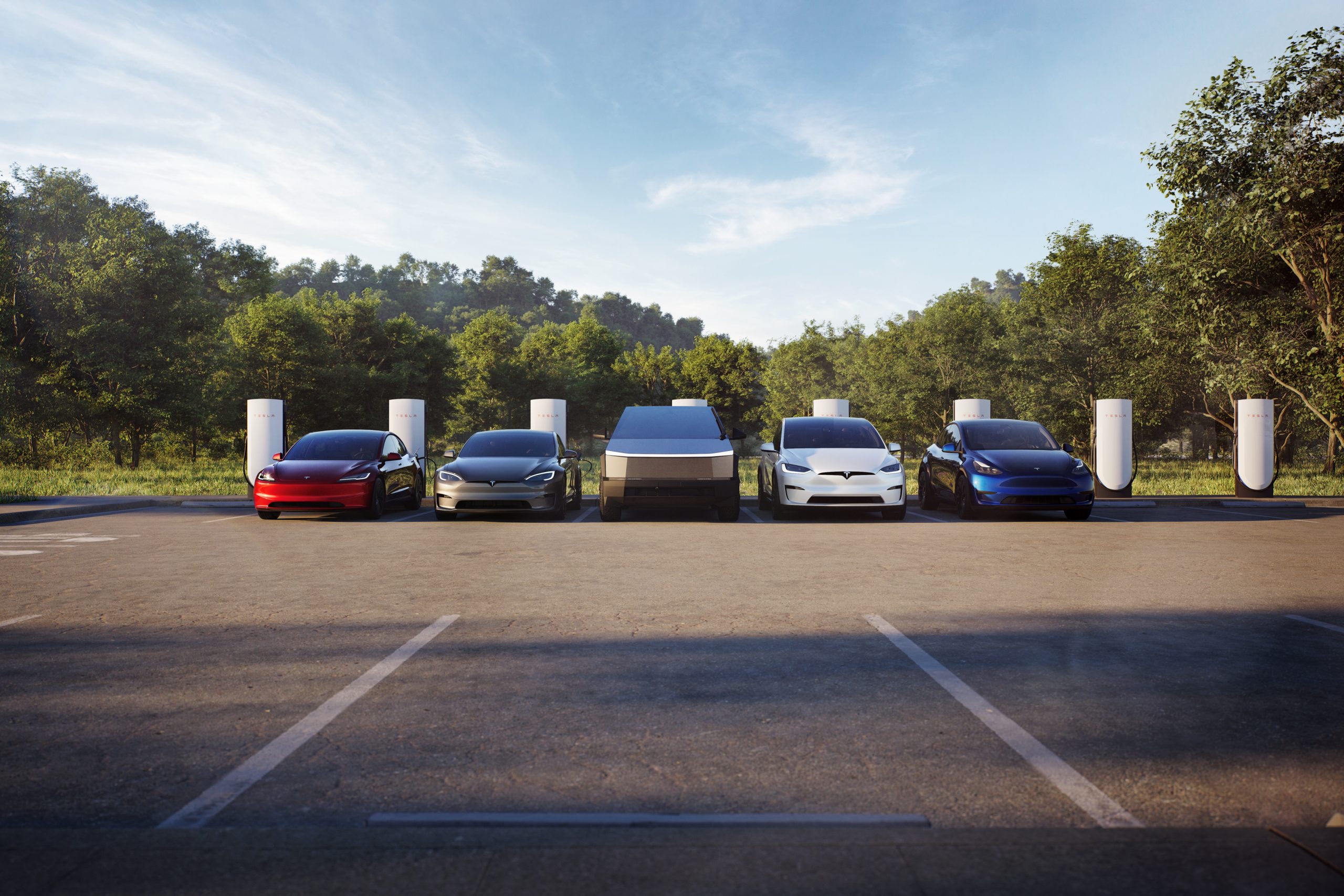
Credit: Tesla
However, other companies that are very close to the 85 percent cutoff are only a few components away from also saving themselves the hassle of the tariffs.
Ford has the following vehicles within just five percent of the 85 percent threshold:
- Ford Mustang GT automatic (80%)
- Ford Mustang GT 5.0 (80%)
- Ford Mustang GT Coupe Premium (80%)
Honda has several within ten percent:
- Honda Passport All-Wheel-Drive (76.5%)
- Honda Passport Trailsport (76.5)
Jeep has two cars:
- Jeep Wrangler Rubicon (76%)
- Jeep Wrangler Sahara (76%)
Volkswagen has one with the ID.4 AWD 82-kWh (75.5%). GMC has two at 75.5% with the Canyon AT4 Crew Cab 4WD and the Canyon Denali Crew Cab 4WD.
Chevrolet has several:
- Chevrolet Colorado 2.7-liter (75.5%)
- Chevrolet Colorado LT Crew Cab 2WD 2.7-liter (75.5%)
- Chevrolet Colorado Z71 Crew Cab 4WD 2.7-liter (75.5%)
These companies are close to reaching the 85% threshold, but adjustments need to be made to work toward that number.
Anything from seats to fabric to glass can be swapped out for American-made products, making these cars more domestically sourced and thus qualifying them for the zero-tariff boundary.
Frank DuBois of American University said that manufacturers like to see stability in their relationships with suppliers and major trade partners. He said that Trump’s tariff plan could cause “a period of real instability,” but it will only be temporary.
Now is the time to push American manufacturing forward, solidifying a future with more U.S.-made vehicles and creating more domestic jobs. Tesla will also need to scramble to make adjustments to its vehicles that are below 85%.
News
Tesla Cybertruck RWD production in full swing at Giga Texas
Videos of several freshly produced Cybertruck LR RWD units were shared on social media platform X.
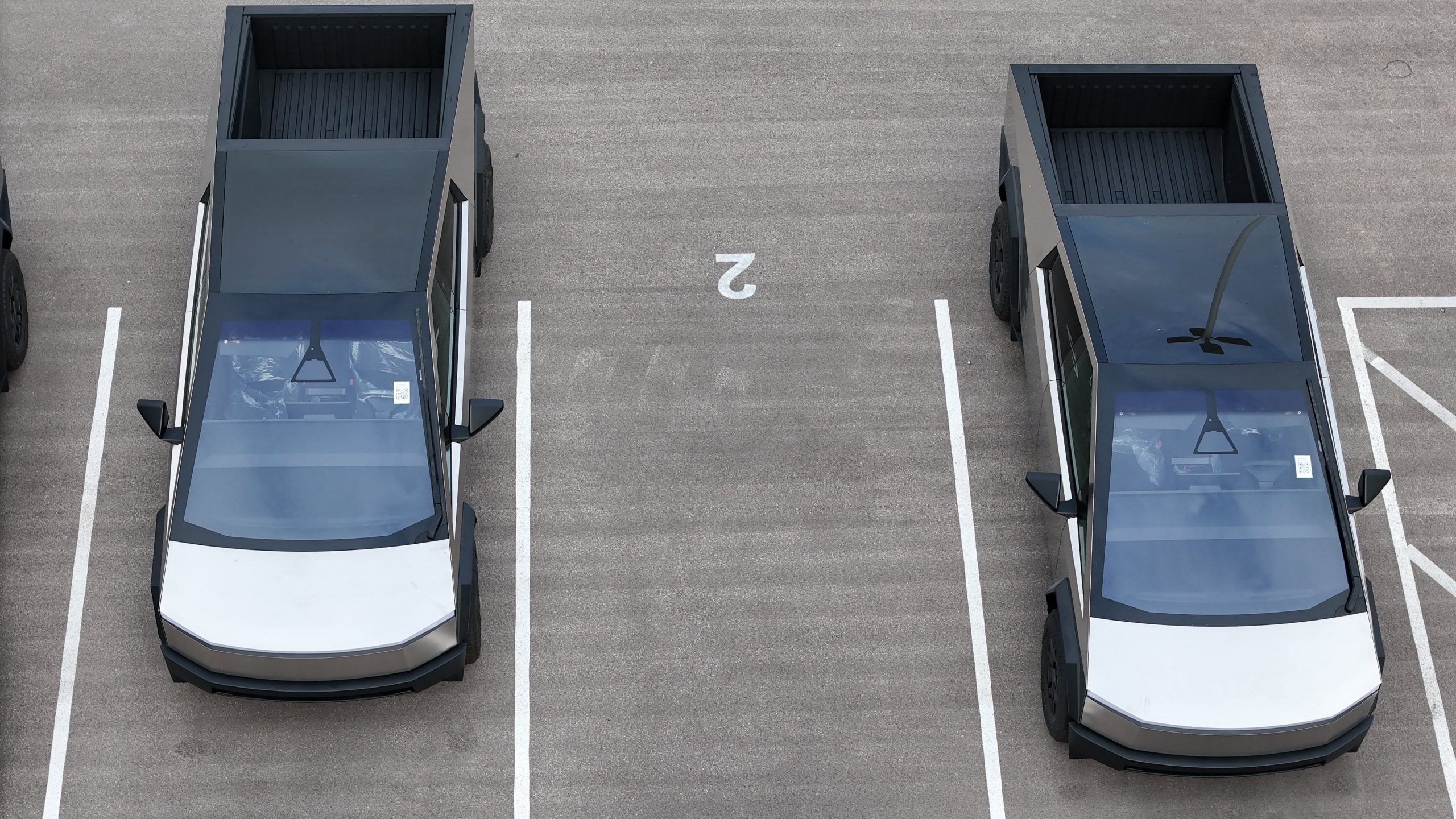
It appears that Tesla is indeed ramping the production of the Cybertruck Long Range Rear Wheel Drive (LR RWD), the most affordable variant of the brutalist all-electric pickup truck.
Videos of several freshly produced Cybertruck LR RWD units were shared on social media platform X.
Giga Texas Footage
As per longtime Tesla watcher Joe Tegtmeyer, Giga, Texas, was a hotbed of activity when he conducted his recent drone flyover. Apart from what seemed to be Cybercab castings being gathered in the complex, a good number of Cybertruck LR RWD units could also be seen in the facility’s staging area. The Cybertruck LR RWD units are quite easy to spot since they are not equipped with the motorized tonneau cover that is standard on the Cybertruck AWD and Cyberbeast.
The presence of the Cybertruck LR RWD units in Giga Texas’ staging area suggests that Tesla is ramping the production of the base all-electric pickup truck. This bodes well for the vehicle, which is still premium priced despite missing a good number of features that are standard in the Cybertruck AWD and Cyberbeast.
Cybertruck Long Range RWD Specs
The Cybertruck LR RWD is priced at $69,990 before incentives, making it $10,000 more affordable than the Cybertruck AWD. For its price, the Cybertruck Long Range RWD offers a range of 350 miles per charge if equipped with its 18” standard Wheels. It can also add up to 147 miles of range in 15 minutes using a Tesla Supercharger.
Much of the cost-cutting measures taken by Tesla are evident in the cabin of the Cybertruck LR RWD. This could be seen in its textile seats, standard console, seven-speaker audio system with no active noise cancellation, and lack of a 9.4” second-row display. It is also missing the motorized tonneau cover, the 2x 120V and 1x 240V power outlets on the bed, and the 2x 120V power outlets in the cabin. It is also equipped with an adaptive coil spring suspension instead of the adaptive air suspension in the Cybertruck AWD and Cyberbeast.
-

 News1 week ago
News1 week agoTesla’s Hollywood Diner is finally getting close to opening
-

 Elon Musk2 weeks ago
Elon Musk2 weeks agoTesla doubles down on Robotaxi launch date, putting a big bet on its timeline
-

 News6 days ago
News6 days agoTesla is trying to make a statement with its Q2 delivery numbers
-

 Investor's Corner1 week ago
Investor's Corner1 week agoLIVE BLOG: Tesla (TSLA) Q1 2025 Company Update and earnings call
-
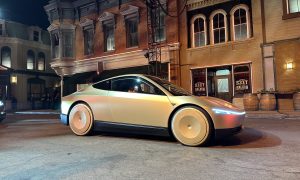
 Elon Musk2 weeks ago
Elon Musk2 weeks agoTesla reportedly suspended Cybercab and Semi parts order amid tariff war: Reuters
-
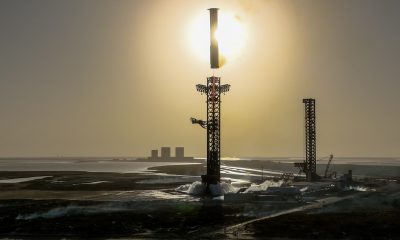
 SpaceX2 weeks ago
SpaceX2 weeks agoSpaceX pitches subscription model for Trump’s Golden Dome
-
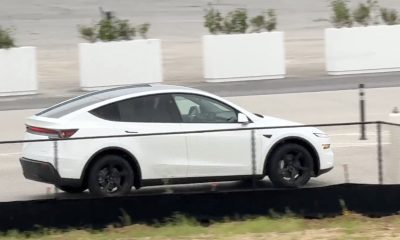
 News2 weeks ago
News2 weeks agoDriverless Teslas using FSD Unsupervised are starting to look common in Giga Texas
-
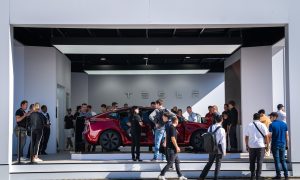
 News4 days ago
News4 days agoNY Democrats are taking aim at Tesla direct sales licenses in New York


